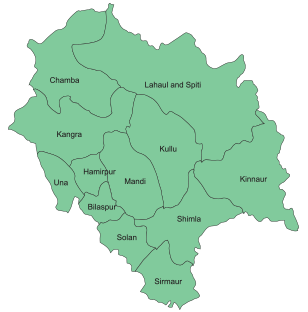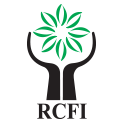Uttar Pradesh was one of the major operating states for RCFI due to its socio-economic conditions. As a result of the same, 20% of the total project volume of the RCFI goes to Uttar Pradesh. The organization has completed 3028 major projects in the state. They all are versatile and addressing various measurers of the poverty indicators.
Uttar Pradesh is the most populous state in India and is home to 200 million people, 60 million of who are poor. The pace of poverty reduction in the state has been slower than the rest of the country. Poverty is widespread. The central and eastern districts in particular have very high levels of poverty. The state is also experiencing widening consumption inequality in urban areas. Growth is slow and is driven mainly by services.
Uttar Pradesh
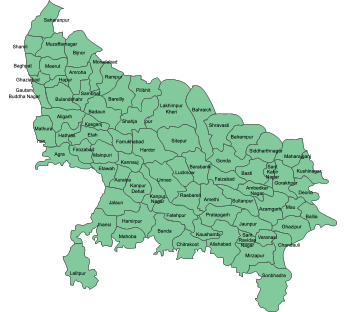
Programme Highlights
- 305 group irrigation schemes are working in the rural part of the state with the support of RCFI. They can irrigate 1830 acres of rainfed agricultural land and they can cultivate in multiple seasons. 1220 farmers are getting benefits from the same.
- All these places, RCFI also supported farmers in replacing diesel engines with electric motors, which has a very positive effect in nature.
- RCFI has constructed one orphanage in UP and now 72 students are studying there.
- 23 schools in the state received funds for infrastructural development. They all are working in deferent rural pockets of the state. 3795 students are getting benefits from the same.
- 2768 group drinking water schemes have constructed in the state. 4 to 10 people are taking the benefit of each scheme. 19376 families are using the same for their daily consumption purposes and personal hygiene. The organization also supported purchasing lifting devices. 265 groups received such benefits.
- The dream home was one of the other areas. Four very poor families received aid to construct their dream home, which covers the full cost of the construction and basic infrastructure.
- 119 personal hygiene corners constructed in deferent parts of the state. It has been constructed in the central part of the villages so that all villagers can use the same.
- 114 cultural centers have been constructed in the state. 39900+ families can use the facility as per their needs. This could facilitate education tuition, training, and other activities.
- The organization helped people in getting food during festive seasons and calamity times.
Uttarakhand
Uttarakhand is one of India’s fastest-growing states. The state’s economic growth is mainly driven by the non-farm sectors of the economy. Poverty reduction in the state was among the most rapid in the country after 2005. Despite this, some of Uttarakhand’s central and southern districts record higher levels of poverty than its other regions. Consumption inequality has been increasing in the state, especially in urban areas.Poor infrastructure in the hills is naturally an important contributory factor behind the high poverty levels in some of the hilly areas of the state. Spatial data shows fewer educational institutions, hospitals, etc., in the high-poverty concentration zones.
RCFI has invested a huge amount in the basic infrastructural development of Uttarakhand. The organization started its operation in the state during 2012. 711 major projects have completed in the state so far.

Programme Highlights
- Drinking water projects were a major part of the Jharkhand programme. 164 community drinking water projects were completed and hand it over to the local people.
- 121 bore-well based schemes and 43 hand pump based schemes are in operation now. As per the need of the community, organ9zation also provided lifting devices to 21 schemes.
- Four schools are running in the Jharkhand. They all established during 2016 and running now by the local and external donations. Children from very poor households are studying there. More than 350 students can benefit from the interventions.
- One WASH center is established there in Hanvara district.
- 6 community-level cultural center has been constructed. This facility can be used for 360 families at a time. 1200 HHs can use this. They all are constructed in very poor villages.
- Various humanitarian relief works also done benefiting more than 25000+ families like winter dress distribution, blankets and also conducted feed the poor campaigns in the state at various times. People living in very distress conditions got benefit from these activities.
Punjab
With poor people making up less than a tenth of its population, Punjab is one of India’s richest states. After 2005, poverty reduction in the state was among the fastest in the country. Despite this, Punjab’s western and central districts record higher levels of poverty than its other regions.However, the encouraging statistics of rural Punjab as seen at the aggregate level are not all rosy as we drill down at the micro-level. Our spatial analysis suggests large areas with high poverty in many parts of rural Punjab
RCFI started its operation in the state during 2013 as part of its North Indian mission. Cultural rehabilitation, education, and drinking water was the major area of the operation. RCFI completed 143 major projects in the state.
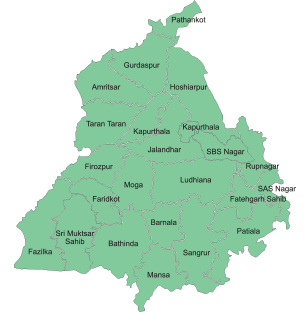
Programme Highlights
- 116 group level drinking water schemes were installed in the state. Most of them are constructed in a remote rural area of Panjab. Almost 1000 families are getting benefit from the intervention.
- Out of 116 drinking water schemes, 19 schemes are for both irrigation and drinking purposes. RCFI selected very poor farmers for the intervention and they all are marginal farmers having land of 1 acre 2.5 acres. This activity could help them irrigating rainfed land.
- RCFI supported one school in Panchayat in constructing new classrooms and establishing a better syllabus.
- And the organization also constructed 40 cultural centers in deferent parts of the state. All of them are handed over to local communities. This facility can be used by 14000 families around villages.
- Feed the poor campaign was one of the major activities in the state.
Tamil Nadu has immense potential in the area of sanitation and drinking water. Salinity is one of the major issues in the coastal and nearby areas. RCFI would like to work in this field in the coming years in Tamil Nadu.
New Delhi
Delhi, officially the National Capital Territory of Delhi (NCT), is the capital of India. It is bordered by the state of Haryana on three sides and by Uttar Pradesh to the east. According to the 2011 census, Delhi’s city proper population was over 16.8 million. Poverty in the national capital came down to around 10 percent of the total population in 2011.
In 2012, RCFI started operations in New Delhi. The organization is rigorously working in the slum areas of the city. A total of 337 major projects have completed so far. Delhi was one of the major beneficiary states of the RCFI’s interventions.
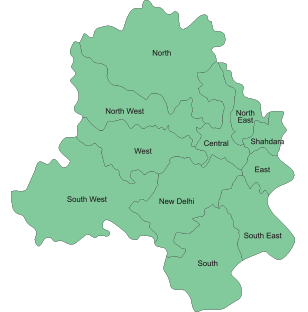
Programme Highlights
- Clean drinking water is one of the key development issues in the city. RCFI’s focus in Delhi was improving the facility of clean drinking water. The organization has set up 329 group drinking water schemes.
- The drinking water programme benefited 3700+ families living in the slum area.
- The organization also provided water-lifting devices for most of them.
- Three cultural centers have constructed so far. They can be used for gathering, performing socio-cultural activities, and conducting programmes and training.
- The facility of personal hygiene is another issue in the city, especially in the slum area. The organization constructed two personal hygiene corner, benefiting people of two gullies.
- Two orphanages have constructed in the city benefiting 80+ students at a time.
- A lot of other humanitarian relief works also done benefiting more than 30000+ families like winter dress distribution, huts for migrants, blankets, medical kits for slum people and also conducted feed the poor campaigns. People living in very distress conditions got benefit from these activities.
Clean drinking water and livelihood for the migrated families and the people living in the slum is one of the major concerns in Delhi. And also issues of health and hygiene are at peak these households. RCFI will be focusing on these themes in the coming years.
Kashmir
Kashmir stood eighth in terms of poverty rate (10.35)%. The available official data (BPL survey 2007-08 of J&K state) reveals that seven poorest districts in the state are Reasi, Ramban, Kishtwar, Poonch, Kargil, Kupwara and Bandipora. These districts have more than 30% population below the poverty line. Kashmir’s economy heavily suffered on infrastructure, in both physical and social terms during the last three decades because of disturbed conditions.
RCFI started working in the region during 2013. 68 major projects have been completed during the period, which includes themes like education, culture, orphan care, and drinking water.
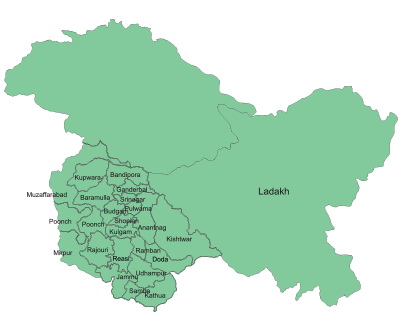
Programme Highlights
- 62 cultural centers have been constructed and hand it over to the community. The main aim of these centers was to help people in education. 18600 families can use the facility as per their needs.
- Five community-level group based drinking water schemes have been commissioned so far. 45 families are using the same now.
- One tailoring center established in the Kashmir area.
- RCFI adopted 65 poor orphans and providing his all costs including health, education, and living. The organization is also helping the at-risk orphans in developing their career plan and live skills.
- Feed the poor campaign was one of the major activities in the state. The organization helped people in getting food during festive seasons and flood times.
Himachal Pradesh
With poor people making up less than a tenth of its population, Himachal Pradesh is one of India’s more prosperous states. Since 1994, there has been a steady decline in poverty in the state, especially in rural areas. As a result, the difference in poverty levels between the state’s rural and urban areas has narrowed considerably. In spite of this, Himachal Pradesh’s western and central districts record higher levels of poverty than its other regions. Growth in the state has been modest after 2005, driven mainly by the non-farm sectors of the economy. In urban areas, consumption inequality has increased.
RCFI started working in Himachal Pradesh during 2018 and completed 2 major projects so far. Three cultural centers have constructed so far in the state. 1050 families are getting benefit from the construction. These centers are been used for education and other socio-economic activities.
